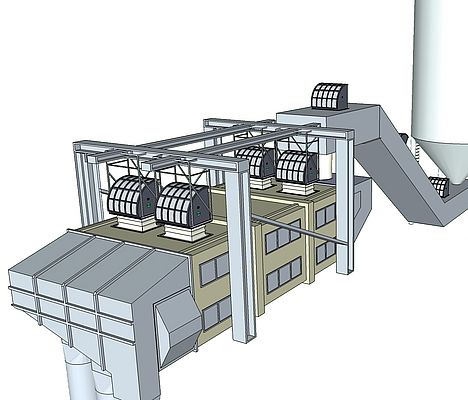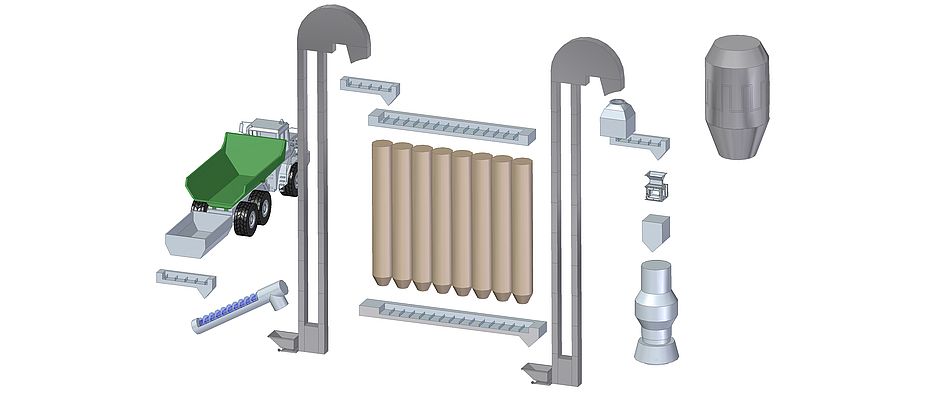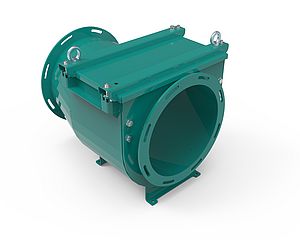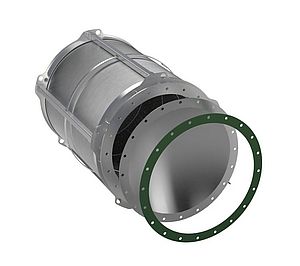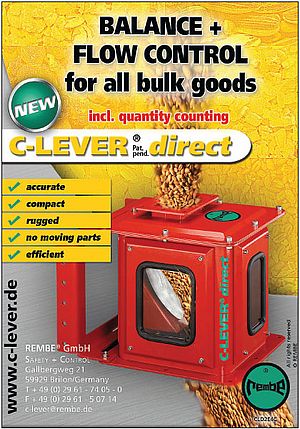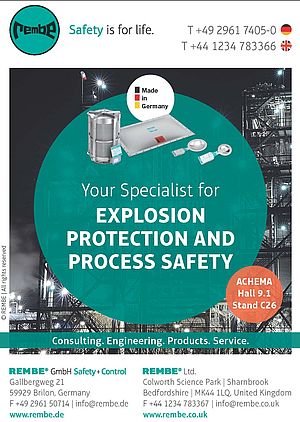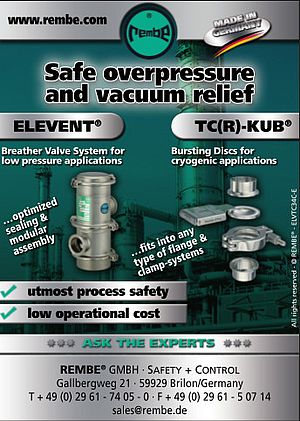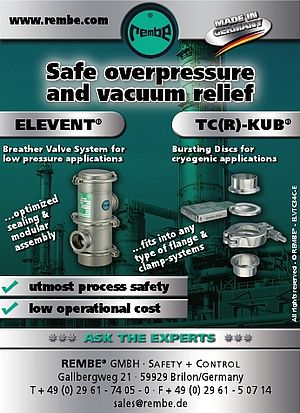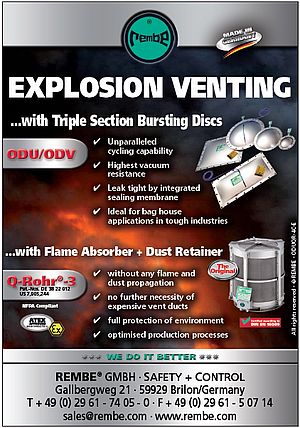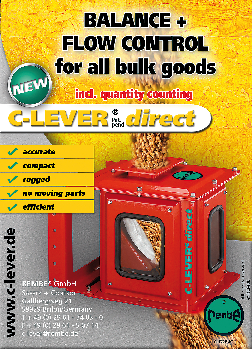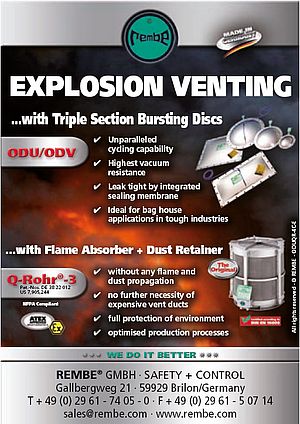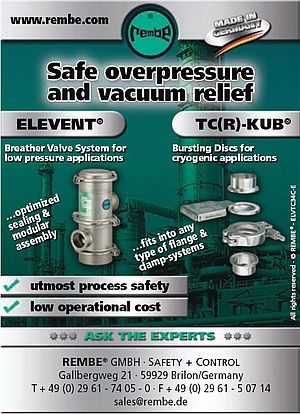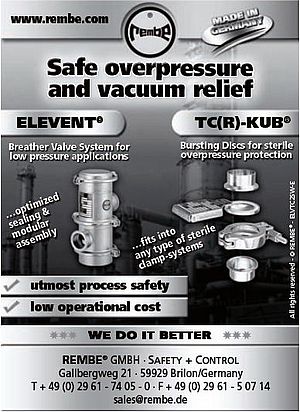All companies that process bulk solids have their own specific features, yet their plants all have certain components, although they may vary in arrangement. These include unloading stations, conveyors, elevators, screens, dryers, mills and filters. In this article we are going to look at each element of a plant on its own and describe the explosion safety measures it requires. Using a specific case, we will illustrate why a comprehensive protection setup is always more cost-effective for the plant operator than protecting each part separately. Fig. 1 shows an existing installation and our subsequent discussion is based on this particular arrangement of elements.
Unloading and mechanical conveyors
Most production processes, e.g. in mills, mixed feed plants, breweries and power stations, start with the unloading of the "raw material". After its delivery by road or rail, the material is often poured into hoppers. Organisational precautions can be taken, e.g. leaving the truck to cool down for at least 15 minutes before starting the unloading process. This substantially reduces the ignition hazard from hot brakes, hot exhaust pipes or catalytic converters. Earthing, too, can offer prevention against spark discharge. If movable objects are involved, such as trucks and railway wagons, it is vital to proceed with great caution, and regular staff training should therefore be provided. In addition, agreements can be concluded with suppliers, specifying that the material must be supplied without hot embers.
In our example the supplied material is taken to a downstream elevator by a screw conveyor. Conveyors can differ from one another and have their specific designs, so that they require different protection methods. All these methods are primarily designed to reduce or even prevent ignition hazards that might arise from the conveyors themselves - by limiting the speed, ensuring appropriate combinations of materials and using a safety-compliant setup. Open, uncased conveyor belts are considered to be the least hazard-prone, as the conveyed material is not usually stirred up and is not in direct contact with hot surfaces - unlike on chain conveyors and screw conveyors, which operate differently. Depending on the fineness, moisture level and dusting propensity of the material, the conveyance principle and speed as well as the connected plant sections, the zoning and the ignition risk assessment, it may be necessary to provide protection through explosion venting devices. The general standard is to install ATEX-approved rotary valves, chemical barriers, quench valves or quick-closing valves.
Elevators
Elevators are some of the most widespread conveyance devices in the bulk solids industry. They usually allow the vertical transportation of large volumes to heights up to about 60 metres. At the same time they are a special source of danger in the event of an explosion, as both their operation and design are conducive towards explosions ("explosive mixtures" and "ignition sources"). Moreover, unless an elevator is protected, pressure waves and flames can spread across several floors. Due to this increased risk, the Association of German Engineers (VDI) has set up an expert committee consisting of plant operators, elevator manufacturers and explosion safety specialists who published a dedicated VDI standard.
In addition to explosion vents, which are normally used as standard pressure venting devices, the VDI standard also deals with flameless venting devices. This is because if the elevator is situated within a building, pressure must not be vented via, bursting discs alone.
Based on the specifications of the VDI standard, three companies - REMBE, IEP Technologies and GreCon - have formed an expert committee for the development of a comprehensive protection system for elevators. ElevatorEX, the result of this working group, offers a suitable solution for all types of elevators.
Silos
Except for self-igniting materials such as biologically active solids, silos do not normally contain their own sources of ignition. This means that they lack any significant components that might cause explosions (see Fig. 2: Five explosion requirements). Nevertheless, there is the hazard that a source of ignition might enter the silo from upstream sections of the plant. Outdoor silos therefore need to be protected with bursting discs, while indoor silos must have flameless venting or explosion suppression systems. Depending on the material that is conveyed by the system, it is also possible to take preventative measures.
Screens
The same is valid for screens, destoners, etc. These are devices which do not normally have their own sources of ignition, so that explosion protection is usually only required in a very small number of cases, despite a high probability of an explosive mix within a screen.
However, it is important to maintain a comprehensive perspective, as they can often be extremely hazardous, especially in combination with upstream dryers (e.g. spray dryers in the dairy industry, drum dryers in the wood industry and flush dryers in the starch industry). The tumbling and rotating movements of a screen may allow "open" to hot embers that were created in a dryer and which have often survived mechanical conveyors where they did not previously ignite. The latest stage at which such embers may be broken down and then cause an explosion is in the screen. In such cases it is important to provide explosion protection for screens, although this poses special challenges to safety engineers, especially within buildings. The pendular movements usually require dedicated solutions where any vibration-prone elements must be decoupled. Moreover, such solutions need to be based on flameless venting principles (see Fig. 3).
Mills
It is in the nature of a mill to have metallic parts that collide with one another at high speed, so that ignition sources are highly probable. Again, this is a closed container with a high concentration of dust which may include oxygen, making an explosion extremely likely. Many mill manufacturers therefore offer their machinery in a design that is resistant to explosion pressure (up to 10 bar). Depending on the size of the mill, this may be very expensive for the operator. Alternatives would be flameless venting solution. In either case a decoupler should be attached both above and below the mill. One particularly smart solution for the air intake of the mill is to install a Q-Rohr LF.
Separate protection is possible, but only a comprehensive strategy is cost-effective
Independent experts always recommend that plant operators work with experienced professionals who take a comprehensive approach and who implement an all-encompassing, fully customised explosion safety solutions.


